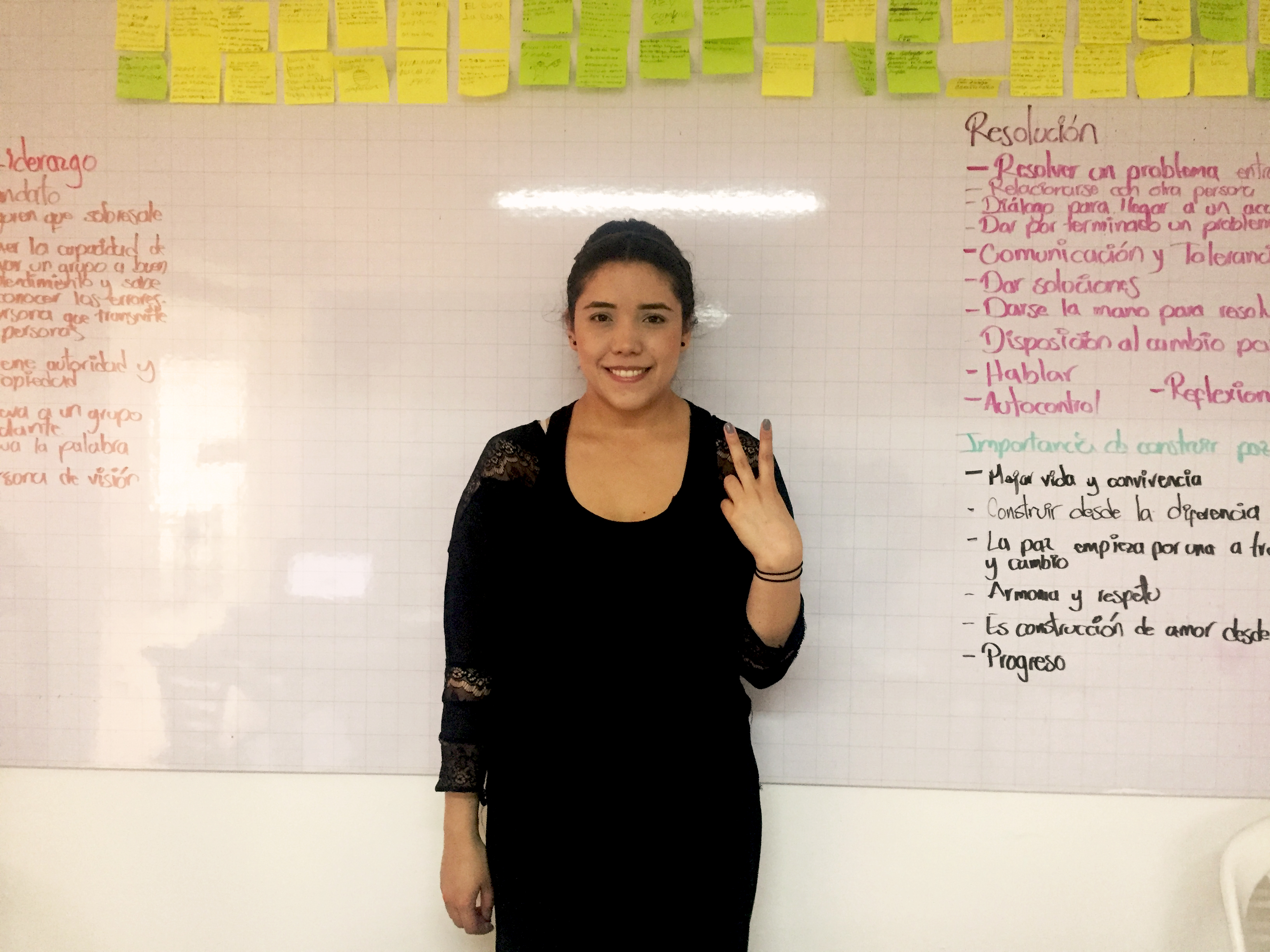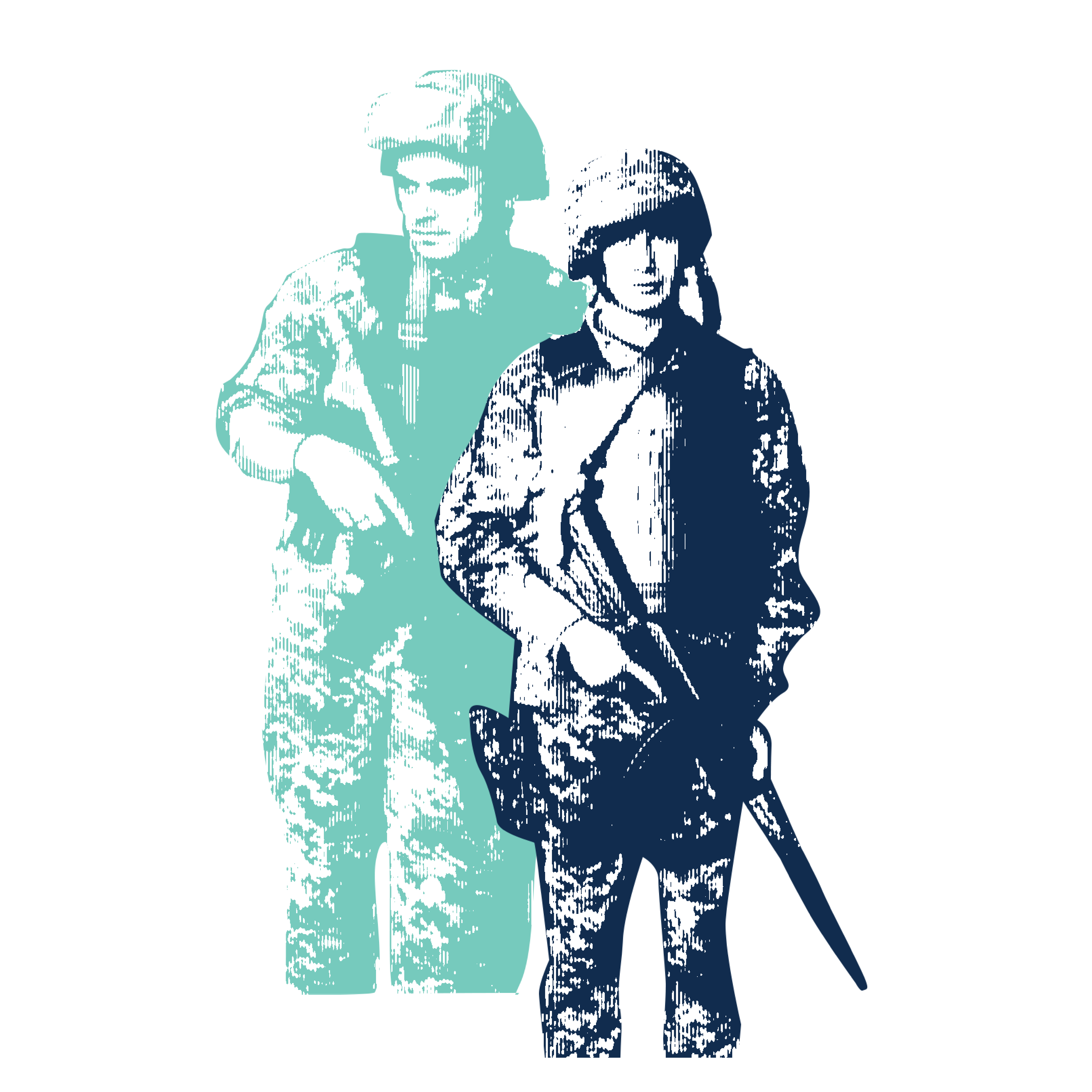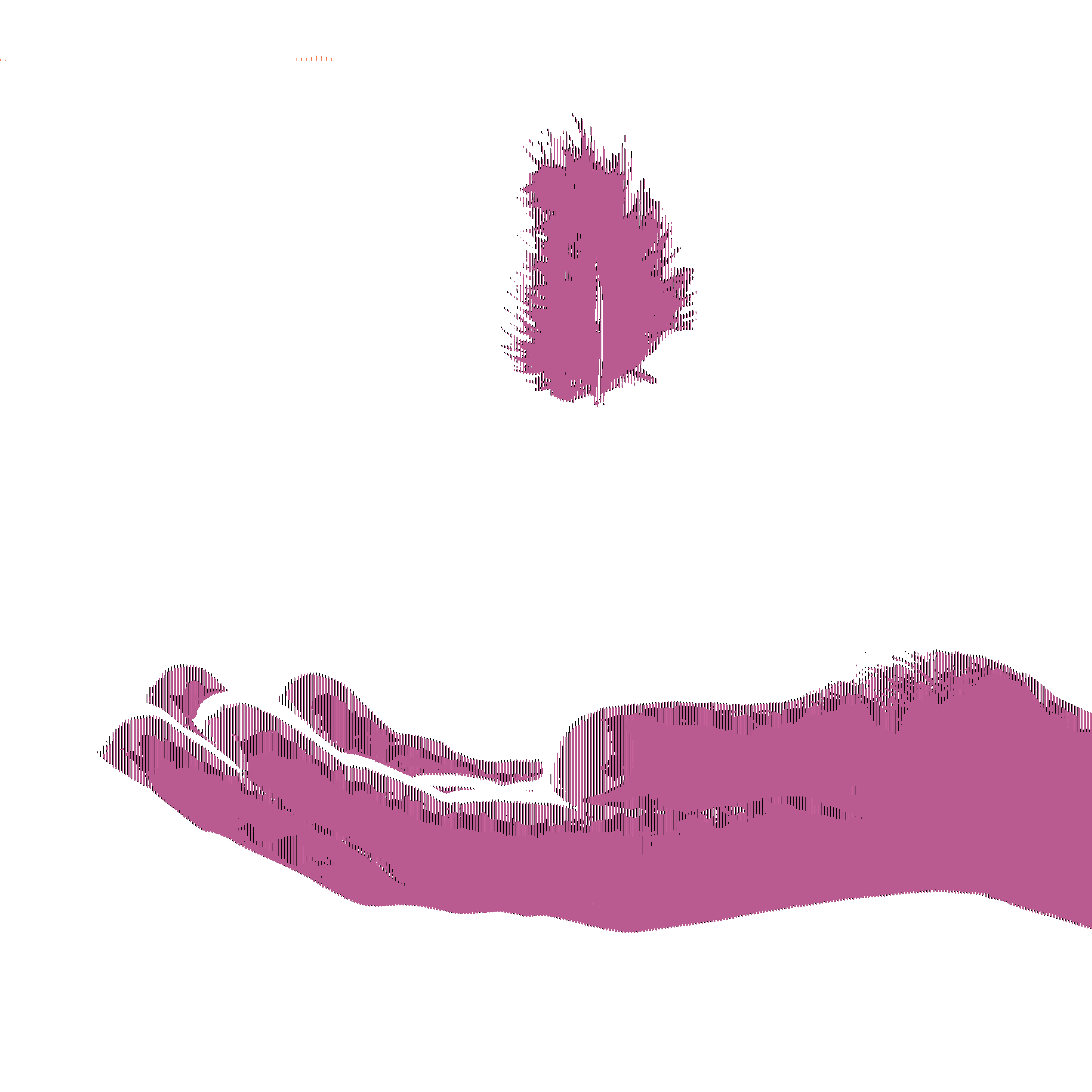Warm-up: Students learn what peacebuilding is, and discuss what conflict and peacebuilding look like in their community.
Introducing the Lesson: Exploring how peacebuilding efforts can address cycles of violence around the world.
Introducing the Reporting I: How Memory Can Help Heal Trauma—From Colombia to Chicago
Introducing the Reporting II: In Post-Conflict Colombia, Imprisoned Ex-Combatants Help Maintain a Fragile Peace
Extension Activities:
- Peacebuilder Spotlight
- Research and Presentation on Colombia’s Conflict (Individual work and group work options)
- Constructing a Timeline of the Colombian Conflict
- Becoming a Peacebuilder/Peace Advocate
- Art for Peace
Objectives:
Students will be able to…
- Explore reporting related to peacebuilding efforts in Colombia and Chicago.
- Examine the role that peacebuilding efforts such as memory work can have in post-conflict settings.
- Use research, writing, art, and/or presentation skills to engage with news stories and make local connections.
Warm-up:
1. Have you heard the term peacebuilding before? What do you think it might mean? Write down your ideas, or discuss them with a classmate?
2. Take a moment to look up the term peacebuilding. (Click here for one definition.) Does this definition add anything new or different from your original ideas? Share with the class.
3. Discuss as a class, with a partner, or reflect individually:
- Where have you heard about conflicts taking place recently?
- What does conflict look like in your own community?
- Why do you think conflict happens in your community? What might be some of the causes?
- How do you think conflict could be reduced in your community? Do you know of any people or groups working to make your community more peaceful?
Introducing the Lesson:
In this lesson, students will read, analyze, and discuss two stories that explore peacebuilding efforts. The first story, “How Memory Can Help Heal Trauma—From Colombia to Chicago” by Laura Zornosa, explores how memory work is used as a peacebuilding and healing tool. The second story, “In Post-Conflict Colombia, Imprisoned Ex-Combatants Help Maintain a Fragile Peace” by Verónica Zaragovia, explores peacebuilding efforts in Colombia in the wake of the longest-running armed conflict in the Western Hemisphere. Both stories examine how peacebuilding can be used as a framework to address the underlying causes of conflict, heal trauma, promote reconciliation, and prevent the recurrence of conflict.
Students may read one or both articles as a class. Alternatively, students may be divided into two groups and assigned to read different articles before completing the discussion questions as a class.
Some useful vocabulary for this lesson:
- Peacebuilding
- Peace accord
- Paramilitary group
- Guerrilla group
- Displacement
- Trauma
- Memory work
- Historical memory
- Structural (violence)
- Structural (cause)
- Transitional justice
- Institutional racism
- Special Jurisdiction for Peace
- Tribunal
Introducing the Reporting I: How Memory Can Help Heal Trauma—From Colombia to Chicago
This story explores how memory work is used as a healing and peacebuilding tool. The article begins by examining how Casa de la Memoria, a museum in Colombia, commemorates victims of violence and promotes a culture of peace. Jouralist Laura Zornosa then examines how the Chicago Torture Justice Center is leveraging historical memory workshops to help survivors of state-sponsored violence come to understand and process their trauma.
As students read the story, they can answer the following comprehension questions:
Introductory Text
- According to the article, which country was home to the longest-running armed conflict in the Western Hemisphere?
- How does the unrest in the city of Tumaco compare to the rest of Colombia?
- When The Revolutionary Armed Forces of Colombia (FARC) began to demobilize, what groups began to take FARC’s place? What impact did this have on residents living in Colombia’s Pacific coast?
- What are some of the regional challenges in Tumaco?
- The protests that began over a controversial tax reform proposed by President Ivan Duque continued after Duque withdrew his proposal. Why?
Enduring Historical—and Ongoing—Trauma
- What is the largest demographic/racial group in Tumaco?
- What does José Luis Foncillas mean when he says “La ley es para los de ruana”?
- What is Casa de la Memoria? What is its importance?
- What is one of Casa de la Memoria's mottos?
- How do members of Mujeres Tejiendo Vida commemorate loved ones who passed away?
- According to the article, what is historical memory?
- How does memory work promote healing and agency for survivors?
Healing from Colombia to Chicago
- What is the purpose of the spiderweb activity?
- According to María del Rosario Acosta López, how can memory work be leveraged as an emancipatory tool?
- How is memory used as a tool in Colombia versus Chicago?
- The Chicago Torture Justice Center and Chicago Torture Justice Memorials both support survivors of police torture. In what ways are these organizations similar? In what ways are they different?
Introducing the Reporting II: In Post-Conflict Colombia, Imprisoned Ex-Combatants Help Maintain a Fragile Peace
This story explores peacebuilding efforts in Colombia, with a focus on the Colombian justice system.
Introductory Text
- Where does Adriana Cómbita volunteer and teach?
- According to the article, how long did the conflict between FARC and the Colombian government last? What year was the peace treaty signed?
- What is the Special Jurisdiction for Peace?
- What is the role of Acción Interna within the Colombian prison system?
‘I had a hardened heart’
- According to ex-paramilitary fighter Matias, what do people fail to understand about ex-fighters like himself?
- How do assumptions lead to conflict in prison?
Incentivizing peace
- How can punishments with a focus on constructive rehabilitation help to rebuild communities? What is the example that Juanita Goebertus gives?
- What happens when a former fighter does not confess to their crimes right away?
- How many people died as a result of the conflict?
- Under the peace agreement, how many years does the Special Jurisdiction for Peace tribunal have to finish its work?
Reflection and Discussion:
Use details from the story and your own reflections and experiences to respond to the following questions. These questions can be explored as part of whole-class discussions, small-group discussions, or individual reflections.
- What parts of the stories you read most interested and/or surprised you, and why?
- Why are peacebuilding efforts important in post-conflict situations? What are some examples of peacebuilding efforts you read about, or other efforts that you are aware of?
- What is memory work or historical memory, and why is it important for people who have lived through conflict? Why is it important for younger generations who may not have lived through the same conflict?
- What is the value in acknowledging and reckoning with uncomfortable pasts?
- How can museums and other spaces of memorialization contribute to peacebuilding efforts and conflict prevention?
- What are the effects of war/conflict on individuals? On their communities and regions?
- Might any of the peacebuilding efforts you learned about in this story be useful in your own community? Why or why not?
Revisit your reflections from the warm-up. In light of what you've read and thought about in this lesson, would you add anything or change any of your answers?
- What does conflict look like in your own community?
- Why do you think conflict happens in your community? What might be some of the causes?
- How do you think conflict could be reduced in your community? Do you know of any people or groups working to make your community more peaceful?
Extension Activities:
Extension Activity 1: Peacebuilder Spotlight
Both stories explored as part of this lesson highlight the work that local peacebuilders are doing. Research a peacebuilder or organization engaged in promoting peace. You can research a well-known figure, or identify a someone doing important work locally, whose story may have been underreported. If possible, reach out and interview this person, or a representative of the organization. Put together a presentation to share with the class. Address the following in your presentation:
- Overview of the individual or organization (Mission, goals, etc.)
- How does the organization promote peace in a particular community/country/region? What community/country/region is most impacted by their work?
- Is there a particular conflict they are/were working to resolve?
- What strategies do they employ and advocate for? (Nonviolence, noncooperation, faith-based mediation, memory work, etc.)
- What solutions, actions, or policies are they promoting?
- What changes resulted from their work? What kind of changes are they working towards?
- How might we support their work in our everyday lives?
Here are some well-known peacebuilders you could research:
- Archbishop Desmond Tutu (Anti-apartheid leader, human rights advocate, and Nobel Peace Prize laureate)
- Rigoberta Menchú Tum (Mayan k’iche’ advocate for Indigenous peoples rights and Nobel Peace Prize laureate)
- Bishop Carlos Filipe Ximenes Belo (A leader in the East Timor independence struggle and Nobel Peace Prize laureate)
- Malala Yousafzai (Advocate for girls’ education and women's equality and Nobel Peace Prize laureate)
- Martin Luther King Jr. (Civil rights leader, Nobel Peace Prize laureate, and minister)
- Nelson Mandela (Former President of South Africa, anti-apartheid leader, and Nobel Peace Prize laureate)
- Dalai Lama (Spiritual leader and Nobel Peace Prize laureate)
- Maria Angelita Ressa (Journalist and Nobel Peace Prize laureate)
- Nadia Murad Basee Taha (Iraqi Yazidi human rights activist and Nobel Peace Prize laureate)
- Consider doing some research and finding out: Who is doing peacebuilding work in your own community?
Here are some organizations that you could research:
- Amnesty International
- Nonviolent Peaceforce
- Peace Direct
- Alliance for Peacebuilding
- International Alert
- Search for Common Ground
- Center for Constitutional Rights
- The International Campaign to Abolish Nuclear Weapons
- Crisis Action
- Cure Violence
- Consider doing some research and finding out: What organizations are working on conflict resolution, violence interruption, and peacebuilding in your own community?
Extension Activity 2: Research and Present on Colombia’s Conflict
The articles explored as part of this lesson reference Colombia’s longest-running armed conflict. However, neither explains the conflict in-depth or provides a great deal of historical context. To better understand this conflict, research the following:
- The conflict’s history and root causes (land, poverty, politics, violence, etc.)
- Parties involved (Groups and individuals)
- Positions/demands of each involved party
- Relationship among the parties
Activity 1 Option A - Students work individually and present their research in a presentation or paper (2-4 pages).
Activity 1 Option B - Students work in groups of four and each student will be responsible researching one of the aspects of the conflict. Students present their research as a group.
Activity 1 Option C - Divide students into four large groups. Assign each group one of the following communities to research:
- Group A - Colombian state/government forces
- Group B - The Revolutionary Armed Forces of Colombia (FARC)
- Group C - Right-wing paramilitaries
- Group D - Victims of conflict (What people and regions were most affected by this conflict?)
Students present their research to the class. Following presentations students are encouraged to reflect and discuss the following questions as a class.
Note: Like all conflicts, this one is full of complexity involving various parties, issues, relationships, perceptions, and other elements. The major parties listed above are meant to provide students with a starting point. Students are strongly encouraged to identify and research more parties/actors who were involved and or affected by this conflict.
Extension Activity 3: Constructing a Timeline of the Colombian Conflict
To better understand the history of the Colombian conflict, create a timeline as a class. The timeline should mark major events relating to the conflict in sequential order. This timeline will serve as a visual representation of the conflict and help students better understand the events that lead to the signing of Colombia's 2016 Peace Accord. Students should include the following in their timeline:
- At least six events with brief descriptions and dates
- Visuals, images, and/or illustrations with captions (when possible)
Students can create their timeline on:
- Paper
- Poster
- Digital timeline (Prezi, Canva, Visme)
Extension Activity 4: Becoming a Peacebuilder/Peace Advocate
Youth play a key role in promoting and sustaining peace. Across the world, there are many examples of young people contributing to peacebuilding processes at local, national, and international levels. Anyone can be a peacebuilder, and there are many different ways to contribute to peace.
Identify a conflict in your community, country, or region of the world. Drawing from what you learned in this lesson, propose a solution that you believe could contribute to peace. Students may choose to suggest a solution or advocate for one proposed by an organization, community, or individual. Students should remember that peacebuilding comes in many different forms and there is no “one size fits all” approach. Once students have identified a conflict and solution they can promote the solution in one of the following ways:
- Create an infographic
- Students can use Canva's free infographic maker for their project.
- Creating a Public Service Announcement (PSA)
- Click here to explore PSA’s created by other students.
- Writing a Letter: Make your voice heard and influence elected representatives. Write a letter to a representative of your choice expressing your concern about the conflict you identified. In your letter, explain why ending this conflict is an urgent issue and why it should be given priority. Then suggest or promote a solution that could lead to peace.
- Click here to explore examples of persuasive letters written by other students to local representatives.
Extension Activity 5: Art for Peace
Art can be used as an instrument to inspire social and political change. With this in mind, create a piece of art that calls attention to any conflict. You can draw, paint, write (short story, essay, poetry, or stage play), choreograph a dance, or use photography to inspire peace. You may choose to focus on, criticize, depict, or explain a particular aspect of this conflict. For example, you can create a drawing that illustrates the effects of this conflict on children in particular. Consider sharing your work on social media or display it at school to raise awareness.
Common Core Standards:
Determine the central ideas or information of a primary or secondary source; provide an accurate summary that makes clear the relationships among the key details and ideas.
Additional Resources for Educators:
If you are looking for more lessons related to peacebuilding, explore these options:










